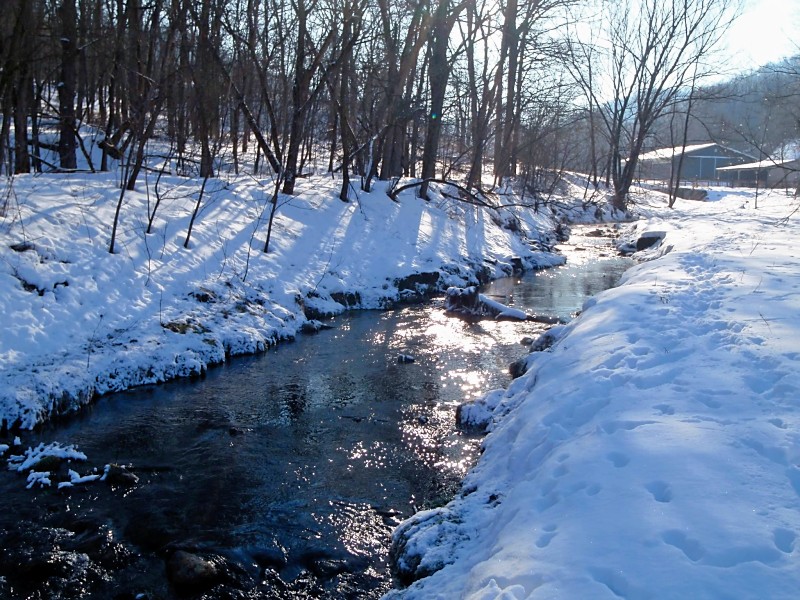By Jane Mazack
Exploring Daley Creek is a blog series that investigates the biological and physical processes at work in a small stream in Minnesota and what it means to consider rivers in a scientific framework. Follow along to learn more about life in the stream and its broader connections, both in the present and as we consider a future of climate change.
What you see may not stay the same. Ecosystems are dynamic; they are changing, reacting, and interacting systems. And while climate change is a global issue, it’s also essential to consider and understand its local implications. Current and future climate changes will significantly impact southeastern Minnesota streams like Daley Creek.
Daley Creek, Houston County, Minnesota. Photo by the author, all rights reserved.
In the short term, increases in air temperature directly increase water temperature via heat exchange. Predicted climate change scenarios estimate that air temperatures in the midwestern United States may rise between 1 and 8°C by the year 2050. In the long term, a warmer climate will also raise the temperature of groundwater. In fact, below-ground temperatures near Saint Paul, Minnesota have already risen nearly 2°C over the past several decades (37 years of historical data1).
Trout and cold-adapted insect populations in southeastern Minnesota streams will be vulnerable to climate changes. Midges such as Diamesa mendotae that complete multiple generations over a single winter may not be able to successfully complete multiple generations if water temperatures rise above their preferred thermal range.
This potential reduction in available invertebrate biomass may exacerbate significant declines in trout populations.Climate change models developed for Wisconsin predict that a 5°C increase in air temperature would eliminate 100% of brook trout and 88% of brown trout distribution across the state2. By identifying stream reaches that may be the most vulnerable to climate changes we can thoughtfully prioritize management and restoration projects.
1 Baker and Baker. 2002. Long-term ground heat flux and heat storage at a mid-latitude site. Climatic Change 54:295-303.
2 Mitro, Lyons, and Stewart. 2010. Predicted effects of climate change on the distribution of wild brook trout and brown trout in Wisconsin streams. In: Carline and LoSapio (Eds.), Proceedings of the Wild Trout X Symposium pp. 69-76.
The writing and analysis of this blog series were conducted under the auspices of the John E. Sawyer Seminar “Making the Mississippi: Formulating New Water Narratives for the 21st Century”. Sawyer seminars are funded by the Andrew Mellon Foundation; further information about “Making the Mississippi” can be found here.
